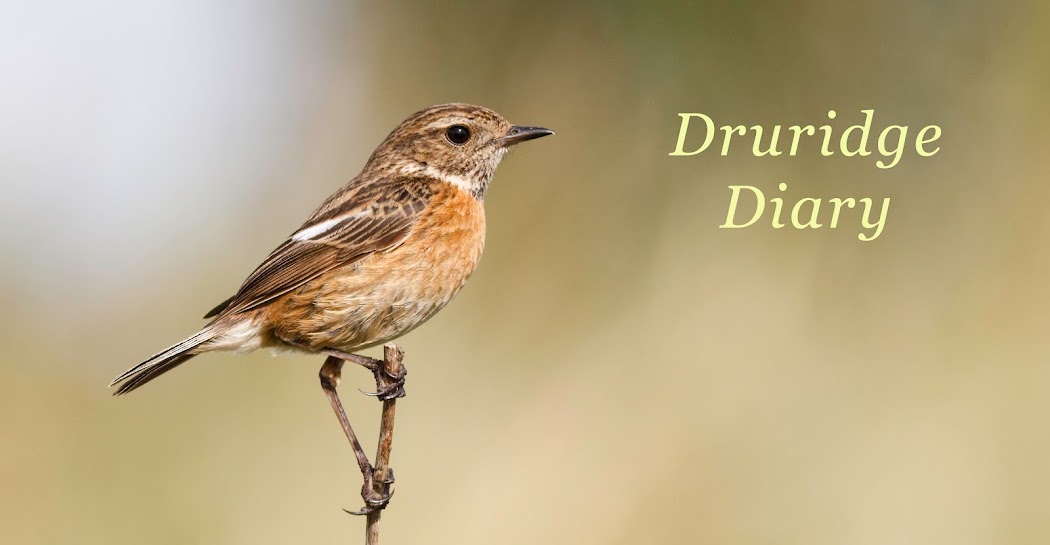The mud on the Budge fields is keeping me interested, it hasn't turned up anything unusual this week but looks as though it could. Ruff was the best of the bunch mid-week when I also saw my first peregrine of the year, turning up bang on-cue with the returning lapwings. There has been good counts of yellow wagtails this week too.
The swallows in the hides seem to be doing well this year, with broods of three, one and five all fledged another four nearly ready to go. I've managed to ring them all.
The great-crested grebe pair are still persevering on their very late nest.
 |
| Stonechats are also doing well. This pair look like they are going to triple-brood |
The strangest sight yesterday was an off-white, tinged yellowish, small finch. I didn't have my bins on me, but it stood out like a sore thumb. It was either a escaped canary or an albino goldfinch (seemingly there has been a canary seen recently at Hauxley and Cresswell??). Either way it will soon be sparrowhawk food I fear.
 |
| common blue in the dunes |
142 peregrine
143 yellowhammer
PWC score 188

















